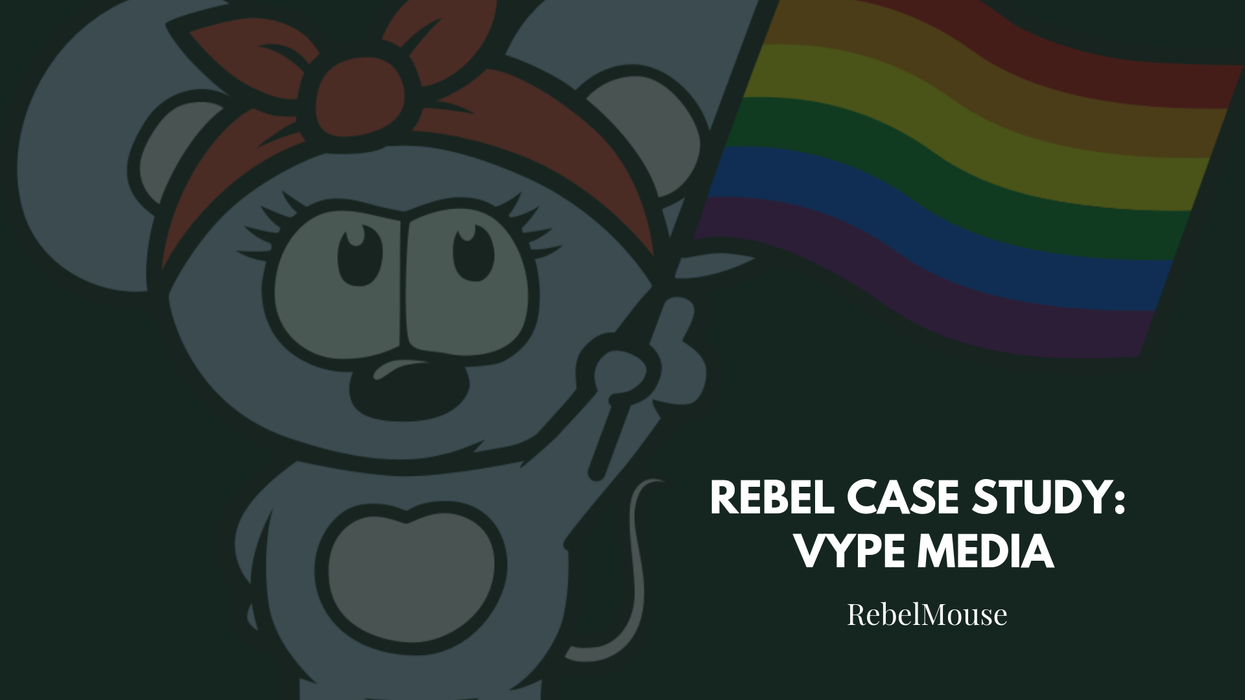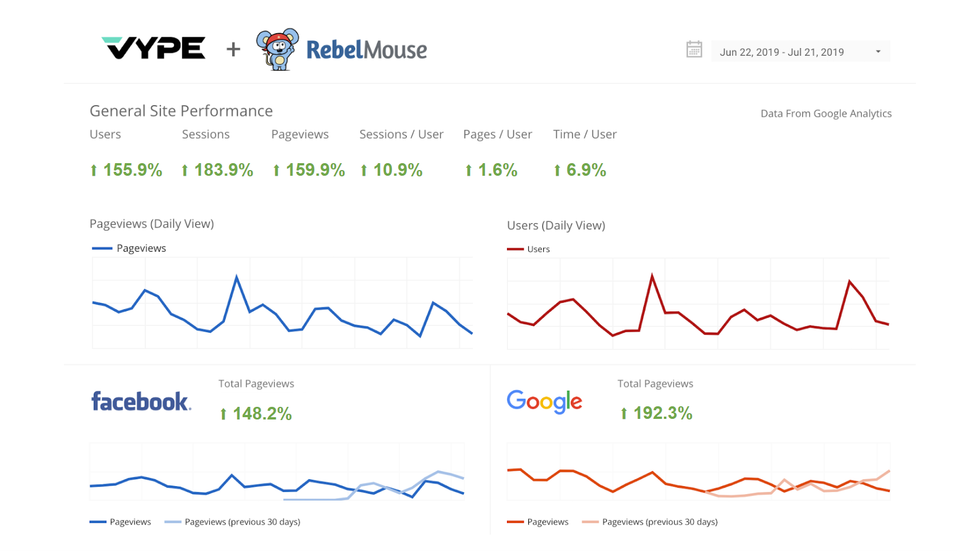VYPE Media launched on RebelMouse just before summer 2019, and across the board it has seen remarkable growth in a relatively short time frame when compared to its performance on its previous platform.
Rebel Case Study: VYPE Media

By Anne BurnsAug 23, 2023
Anne Burns
Director of Marketing
Branding specialist with over ten years of experience in integrated marketing strategies, digital and social content, search engine optimization, and online advertising. I have led efforts to bring newsrooms, small businesses, and legacy brands into a digital presence that’s true to brand, profitable, and personalized.

